Chapter 5
Integumentary System
By Boundless

The skin is the soft outer covering of vertebrates that guards the underlying muscles, bones, ligaments, and internal organs.

The epidermis includes five main layers: the stratum corneum, stratum lucidium, stratum granulosum, stratum spinosum, and stratum germinativum.
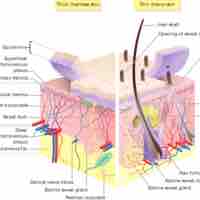
The dermis consists of a papillary and a reticular layer that serve to protect and cushion the body from stress and strain.
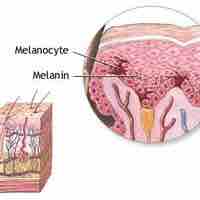
Skin color is determined largely by the amount of melanin pigment produced by melanocytes in the skin.
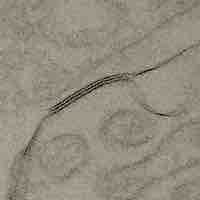
Tight junctions serve as selectively permeable seals in our body's internal and external surfaces.
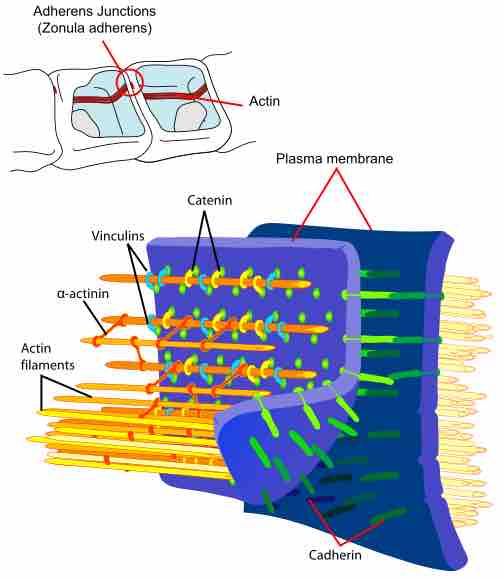
Adherens junctions provide strong mechanical attachments between adjacent cells through the linkage of cytoplasmic face with cytoskeleton.
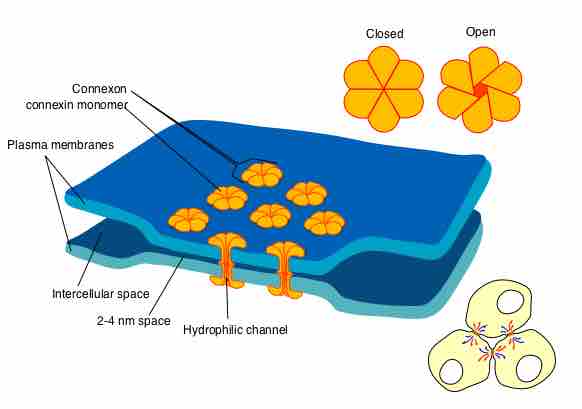
A gap junction is a specialized cell junction that directly connects the cytoplasm of two cells.
Sweat glands, also known as sudoriferous glands, are distributed over most of the body surface.
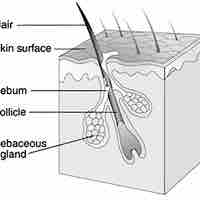
Sebaceous glands are found in the skin all over the body (except the palms of the hands and the soles of the feet).
Finger nails are made of keratin and they perform two major functions: protection and sensation.
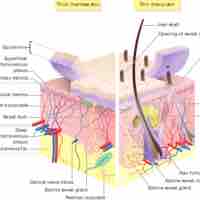
Hair growth occurs from the hair follicle.
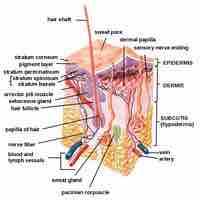
The skin provides an overlaying protective barrier from the environment and pathogens while contributing to the adaptive immune system.
The integumentary system keeps body temperature within limits even when environmental temperature varies; this is called thermoregulation.
The somatosensory system is composed of the receptors and processing centers to produce the sensory modalities, such as touch and pain.
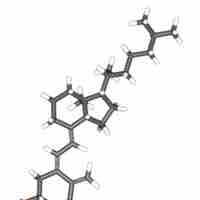
One of the metabolic functions of the skin is the production of vitamin D3 when ultraviolet light reacts with 7-dehydrocholesterol.
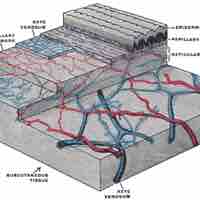
The blood vessels in the dermis provide nourishment and remove waste from its own cells and from the stratum basale of the epidermis.
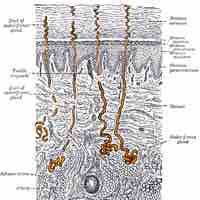
The integumentary system functions in absorption (oxygen and some medications) and excretion (e.g., perspiration via the eccrine glands).
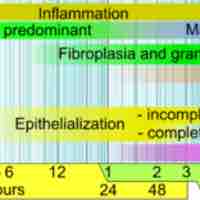
Wound healing is divided into four overlapping states: 1) homeostasis, 2) inflammatory, 3) proliferative, and 4) remodeling.
Epidermal wound healing describes the mechanism by which the skin repairs itself after injury.
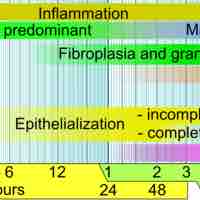
A deep wound involves the inner, deeper layers of the skin (dermis).
Cancer, known medically as a malignant neoplasm, is a broad group of various diseases, all involving unregulated cell growth.
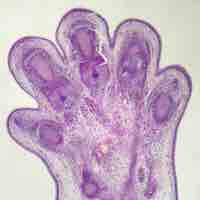
When a cell is damaged, unnecessary, or dangerous to an organism, a cell can initiate the mechanism for cell death known as apoptosis.